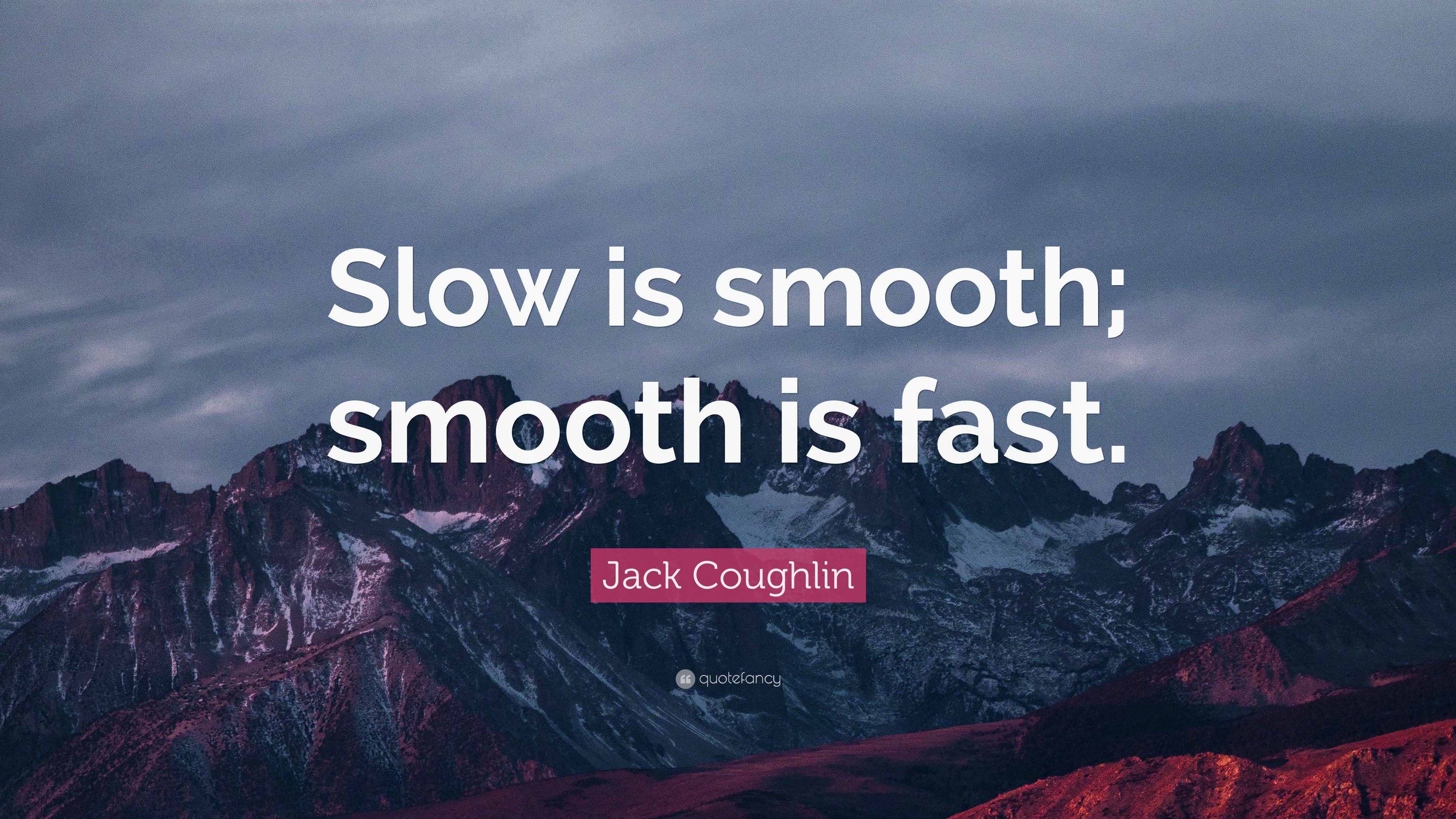Slow Is Smooth, Smooth Is Fast
3 min read
Navy SEALs follow an essential leadership principle: slow is smooth, smooth is fast. Without close team synchrony and communication between crew members, veering off course may lead to lost oars or unnecessary physical exertion; ultimately leading to the race’s defeat.
Slow practice sessions allow them to acquire the correct motor patterns and ensure success even under high-stakes scenarios.
It’s Not Just for Military Operations
Navy SEALs use this motto to remind themselves not to rush into action and risk making mistakes under pressure in high-stakes situations. It forms the basis of their approach to missions – from planning through execution. This doesn’t imply they lack urgency; rather it indicates their preference for deliberate and cautious steps.
Reason being, in an environment where actions have life or death consequences, precision often outshines speed. A hastily prepared soldier could make careless mistakes which put their life at risk, an under-rehearsed athlete could lose against more experienced competition or an ambitious business executive could waste their team’s time and resources by being too quick or reckless in making decisions.
So to sidestep these dangers, the SEALs train methodically. They go through their plans slowly while practicing responses for potential scenarios; all to build muscle memory for high-pressure situations and ensure smooth execution when entering real missions. When on a real mission, their movements are fluid and precise – keeping them alive while winning; also helping them meet goals and get where they want to be – this principle applies equally well for rowing or business operations.
It’s for Sports
No matter if it’s a soldier making careless mistakes that endanger his own safety, an athlete making mistakes against inferior competition, or an executive making poor decisions costing their company money, the lesson remains: start slow, be smooth, then get fast. Training precision allows one to internalize tacit knowledge needed for speed; going too fast hides flaws in technique which could prove dangerous or waste energy – think of a crew boat with eight rowers all needing to work in unison to achieve efficiency at high speed: every second counted counts towards success or failure – as an analogy can serve.
It’s for Business
Business leaders frequently employ the “slow is smooth” motto as an incentive for their employees to complete projects properly without haste, such as taking time for project completion and study, being free from distractions such as social media or other sources, or driving carefully when on construction sites.
Applying the mantra “slow is smooth” helps business leaders prioritize and delegate tasks, communicate clearly with colleagues, develop and implement strategic direction, resolve conflicts more quickly, and increase productivity. Rushing and emotional responses may escalate conflicts further and lead to costly mistakes and lower productivity levels.
Business professionals who take the time to plan, execute and perfect their craft can achieve greater levels of success. From surgeons and master electricians to enterprise sales reps and enterprise sales representatives, these experts recognize the significance of taking it slow and smoothly when executing their craft. Doing it right the first time not only creates proper neural pathways but also speeds learning curves more rapidly while leading to better decisions being made faster without costly repairs.
It’s for Personal Productivity
“Slow is smooth, smooth is fast” has become a mantra used by professionals across multiple fields to achieve success. This philosophy promotes a disciplined approach to workflow and mastery; productivity experts frequently stress this importance of staying focused on one task at a time, avoiding distractions, and practicing deep work.
As anyone who has watched a Navy SEAL operation can attest, this mantra applies in real-life applications. Experts in various fields – surgeons, master electricians and enterprise sales reps alike – reach their pinnacles through carefully planning and deliberate practice of their craft.
Slowing down allows athletes to establish the necessary motor patterns in their nervous systems while also decreasing risk of injury from trying to rush through movements they aren’t ready for. When they do speed up, their performance is both more technically sound and faster than if they had tried rushing into them head first without first learning how to do them slowly.
Professional development and effective communication both benefit from taking a slower and steadier approach. Rushing or emotional reactions can only escalate conflict further while taking an objective and deliberate approach can promote more productive collaboration and conflict resolution. Furthermore, long to-do lists can become distracting even when planned effectively.







